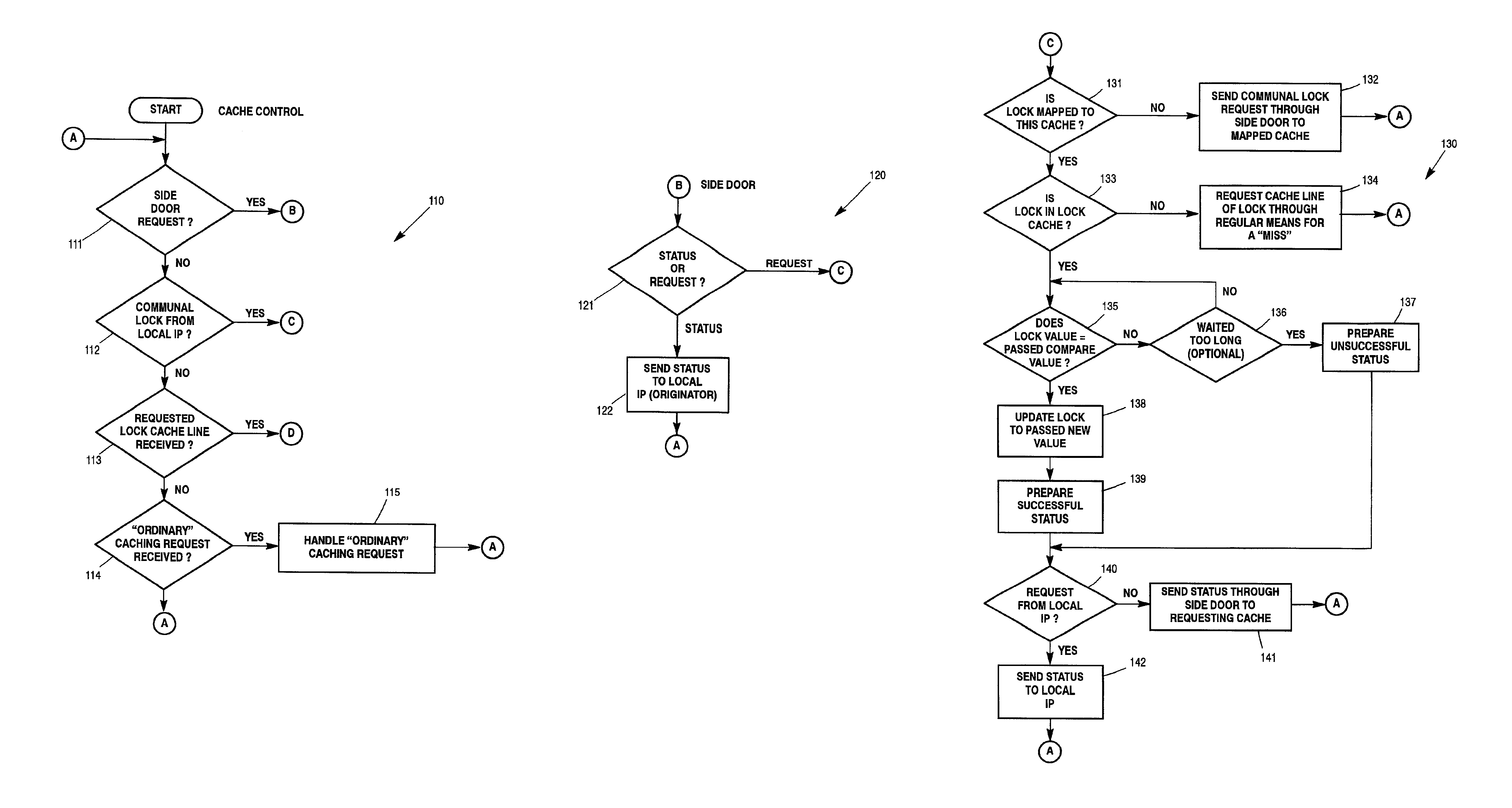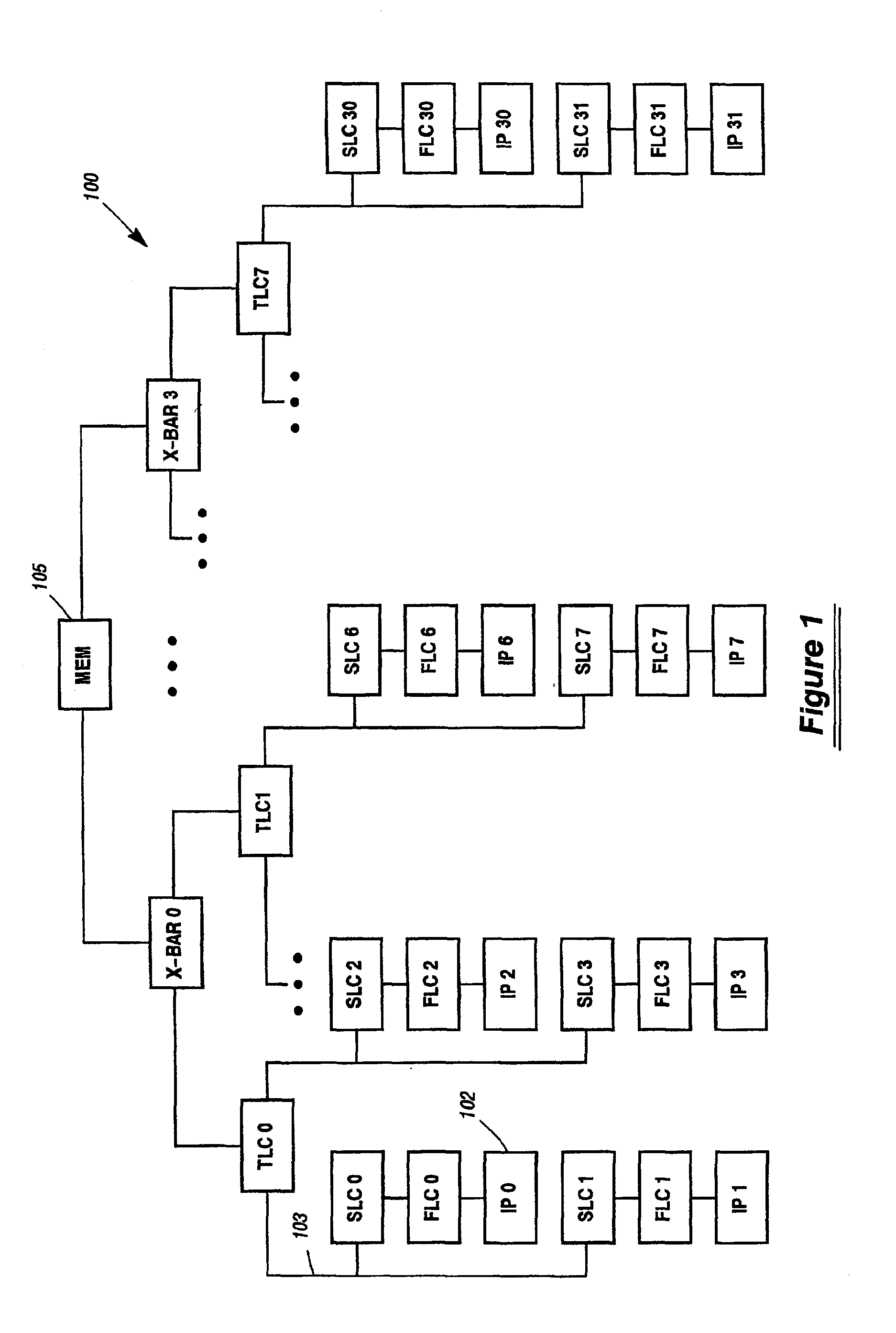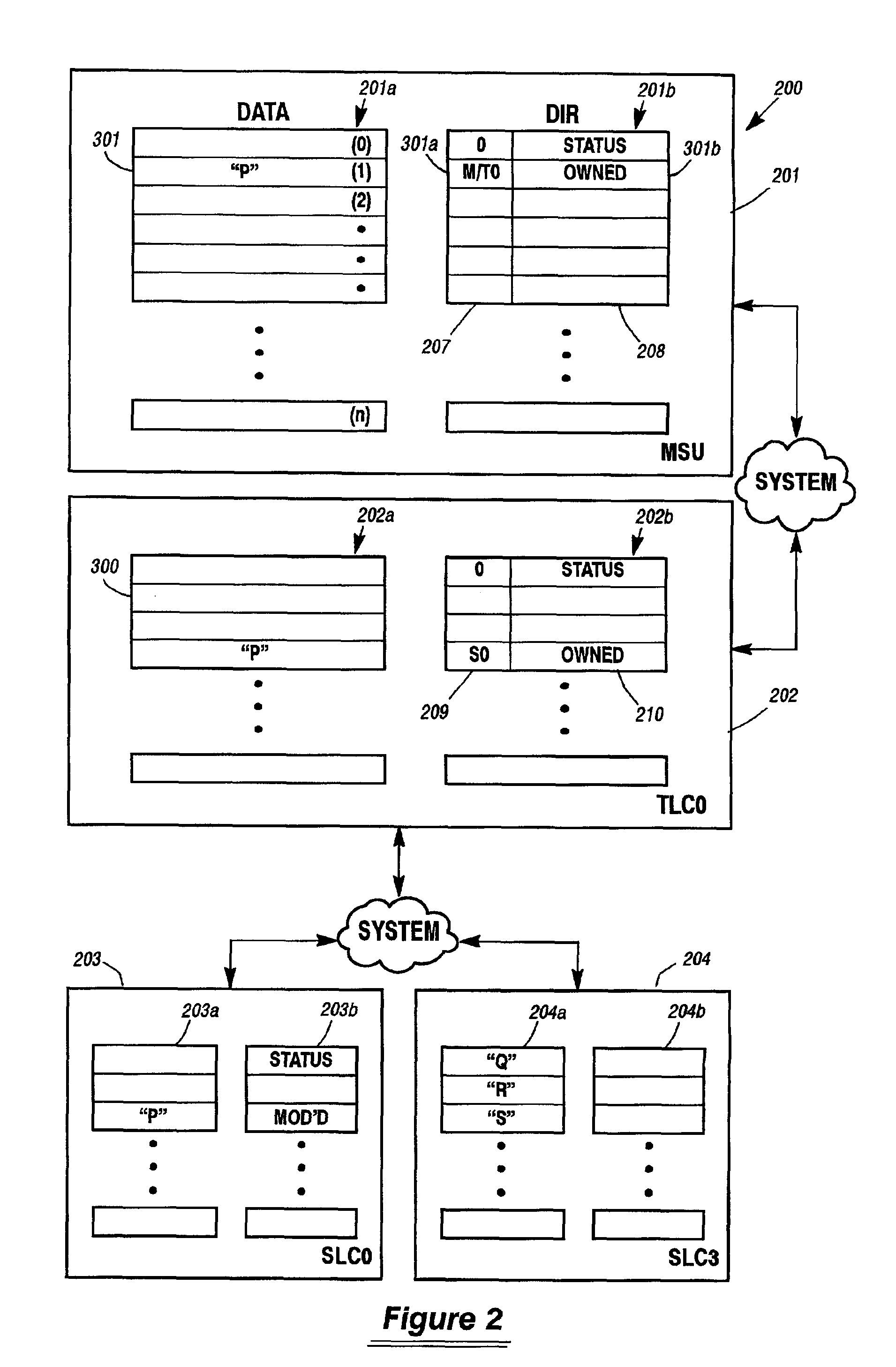Method for processing communal locks
a technology of communal locks and processing methods, applied in the direction of unauthorized memory use protection, memory adressing/allocation/relocation, instruments, etc., to achieve the effect of reducing the hardware utilization of memory busses, reducing the number of processor-cache “trips”, and improving response time to requesters
- Summary
- Abstract
- Description
- Claims
- Application Information
AI Technical Summary
Benefits of technology
Problems solved by technology
Method used
Image
Examples
Embodiment Construction
[0050]The preferred embodiment for implementing the invention herein is in a computer system similar to the ES7000, produced by Unisys Corporation, the Assignee of this patent. However, one of skill in this art will be able to apply the disclosure herein to other similarly architected computer systems. Existing ES7000 cache ownership schemes provide for access to any cache line from any processor. Other multiprocessor machines have what may be thought of as similar or analogous cache ownership schemes, which may also benefit from the inventive concepts described herein. There are up to 32 processors in the current ES7000 System, each with a first and second level cache. In the ES7000, there is a third level cache for every four (4) processors. The third level cache interfaces to a logically central main memory system, providing a Uniform Memory Access (UMA) computing environment for all the third level caches. (There is however, no inherent reason the inventive concepts herein may n...
PUM
 Login to View More
Login to View More Abstract
Description
Claims
Application Information
 Login to View More
Login to View More - R&D
- Intellectual Property
- Life Sciences
- Materials
- Tech Scout
- Unparalleled Data Quality
- Higher Quality Content
- 60% Fewer Hallucinations
Browse by: Latest US Patents, China's latest patents, Technical Efficacy Thesaurus, Application Domain, Technology Topic, Popular Technical Reports.
© 2025 PatSnap. All rights reserved.Legal|Privacy policy|Modern Slavery Act Transparency Statement|Sitemap|About US| Contact US: help@patsnap.com



